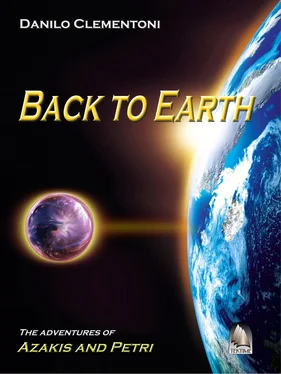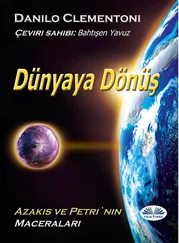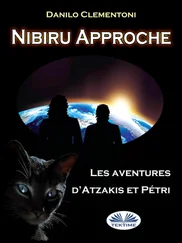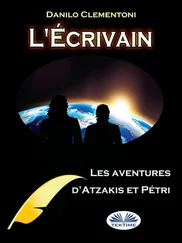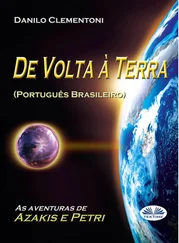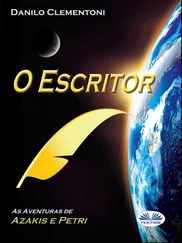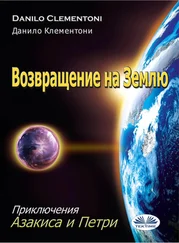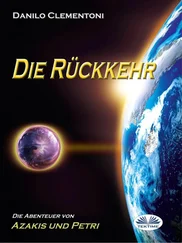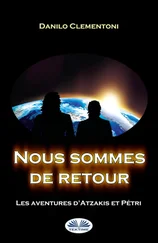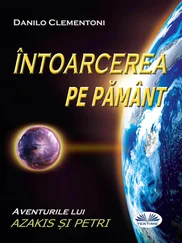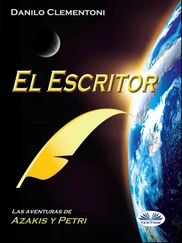Danilo Clementoni - Back To Earth
Здесь есть возможность читать онлайн «Danilo Clementoni - Back To Earth» — ознакомительный отрывок электронной книги совершенно бесплатно, а после прочтения отрывка купить полную версию. В некоторых случаях можно слушать аудио, скачать через торрент в формате fb2 и присутствует краткое содержание. ISBN: , Жанр: foreign_contemporary, foreign_fantasy, Фантастика и фэнтези, на английском языке. Описание произведения, (предисловие) а так же отзывы посетителей доступны на портале библиотеки ЛибКат.
- Название:Back To Earth
- Автор:
- Жанр:
- Год:неизвестен
- ISBN:978-8-88-535622-1
- Рейтинг книги:4 / 5. Голосов: 1
-
Избранное:Добавить в избранное
- Отзывы:
-
Ваша оценка:
- 80
- 1
- 2
- 3
- 4
- 5
Back To Earth: краткое содержание, описание и аннотация
Предлагаем к чтению аннотацию, описание, краткое содержание или предисловие (зависит от того, что написал сам автор книги «Back To Earth»). Если вы не нашли необходимую информацию о книге — напишите в комментариях, мы постараемся отыскать её.
Back To Earth — читать онлайн ознакомительный отрывок
Ниже представлен текст книги, разбитый по страницам. Система сохранения места последней прочитанной страницы, позволяет с удобством читать онлайн бесплатно книгу «Back To Earth», без необходимости каждый раз заново искать на чём Вы остановились. Поставьте закладку, и сможете в любой момент перейти на страницу, на которой закончили чтение.
Интервал:
Закладка:
Danilo Clementoni
Back to Earth
The adventures of Azakis and Petri
Original title: Il ritorno
Translated by: Melanie Rutter
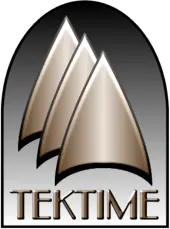
This book is a work of fiction. Any names, characters, places and organisations mentioned are the work of the author's imagination and are intended to make the narrative authentic. Any similarity with real events or persons, living or deceased, is purely coincidental.
BACK TO EARTH
Copyright © 2013 Danilo Clementoni
First edition: November 2013
English edition: September 2016
Translator: Melanie Rutter
Self-published and printed
facebook: https://www.facebook.com/danilo.clementoni
blog: dclementoni.blogspot.it
e-mail: d.clementoni@gmail.com
All rights reserved. No part of this publication may be reproduced in any form, including by any mechanical or electronic system, without the written permission of the editor, except for brief passages taken for the
purposes of review.
To my wife and son, for their patience and their valuable suggestions, which helped me to make improvements to both my story and myself.
Special thanks to all my friends for their never-ending support, and for spurring me on to complete this work. Without them it might never have seen the light.
I would like to thank Melanie Rutter, my translator, for working on this book and for the passion she has shown in completing this translation.
âWe were on our way back. Only one of our solar years had passed since we had been forced to leave the planet in haste, but for them, in Earth years, it had been 3,600.
What would we find?â
Introduction
The twelfth planet, Nibiru (the planet of the passing) as it was called by the Sumerians, or Marduk (king of the heavens) as it was referred to by the Babylonians, is actually a celestial body orbiting our sun with a period of 3,600 years. Its orbit is significantly elliptical, retrograde (rotating around the sun in the opposite direction to the other planets) and distinctly tilted relative to the plane of our solar system.
Each cyclical approach has almost always caused huge interplanetary upheavals in our solar system, both in the orbits and the conformation of the planets it consists of. It was during one of its more tumultuous transitions that the majestic planet Tiamat, located between Mars and Jupiter, with a mass approximately nine times that of the Earth of today, rich in water and endowed with eleven satellites, was destroyed in a cataclysmic collision. One of the seven moons orbiting Nibiru struck the gigantic Tiamat, effectively splitting it in half, and catapulting the two sections into opposing orbits. In the following transition (the âsecond dayâ of Genesis), the remaining satellites of Nibiru finished off this process, completely destroying one of the two sections formed from the first collision. The debris generated from multiple impacts created what we now know as the âasteroid beltâ, or âhammered braceletâ as it came to be called by the Sumerians. This was partly swallowed up by the neighbouring planets. It was Jupiter, especially, which captured most of the debris, thus noticeably increasing its own mass.
The satellite artefacts of this disaster, including those surviving from Tiamat, were mostly âfired offâ into outer orbits, forming what we now know as âcometsâ. The part that survived the second transition is now positioned in a stable orbit between Mars and Venus, taking along with it the last remaining satellite and thus forming what we now call the Earth, together with its inseparable companion, the Moon.
The scar caused by that cosmic impact, which occurred approximately 4 billion years ago, is still partially visible today. The scarred part of the planet is now completely covered by water, in what is now called the Pacific Ocean. This occupies about a third of the earth's surface, extending over 179 million square kilometres. Over this vast area there is virtually no landmass, but instead there is a large depression extending to a depth of over ten kilometres.
Currently, Nibiru is much like Earth in its conformation. Two thirds of it is covered in water, whilst the rest is occupied by a single continent that stretches from north to south, with a total surface of over 100 million square kilometres. For hundreds of thousands of years, some of its inhabitants have been taking advantage of the close approaches of their planet to our own, making regular visits, each time influencing the culture, knowledge, technology and the very evolution of the human race. Our predecessors have referred to them in many ways, but perhaps the name that represents them best has always been âGodsâ.
Theos spacecraft â 1,000,000 km from Jupiter
Azakis was stretched out comfortably on his dark, auto-moulding armchair. It had been given to him as a gift some years before by an old Craftsman friend who had made it with his own hands on the occasion of his first interplanetary mission.
âIt will bring you luck,â heâd told him that day. âIt will help you to relax and make the right decisions when you need to.â
Indeed, he had taken many decisions while sitting there, and luck had often been on his side. So he had always recalled that cherished memory when doing so, in spite of the many rules that would prevent its use, especially on a category Bousen-1 starship such as the one in which he now found himself.
A blue-tinged wisp of smoke rose rapidly and vertically from the cigar he held between the thumb and forefinger of his right hand, while his eyes tried to trace the 4.2 AU 1that still separated him from his destination. Although he had now been making these voyages for several years, the charm of the darkness in the surrounding space, and the thousands of stars it was speckled with, were still able to capture his thoughts. The large oval-shaped opening right in front of him afforded a complete view in the direction of travel, and he was still surprised at how that gossamer-thin forcefield could protect him from the sidereal cold of space, prevent the sudden escape of air, and stop him being sucked into the void outside. Death would be almost immediate. He took a quick drag on his long cigar and continued to gaze into the holographic display in front of him, in which he could see the tired, unshaven face of his travelling companion. In another part of the ship, Petri was repairing the control system on the discharge ducts. He amused himself a little by distorting the image in the centre, blowing the smoke heâd just inhaled, creating a wave effect that reminded him so much of the sinuous movements of the exotic dancers he had often gone to see when he finally returned to his home town and could enjoy some well-deserved rest.
Petri, his friend and companion in adventure, was almost thirty-two, and this was his fourth mission of this kind. His large and imposing physique commanded the respect of all those who met him. With black eyes like the space outside, his dark, long and dishevelled hair that fell to his shoulders, his stature of almost two metres thirty, and the powerful chest and arms capable of effortlessly lifting an adult Nebir 2, he still had the soul of a child. The sight of a Soel flower 3blooming in the sun would move him, and he could sit for hours, enraptured, while watching the waves breaking on the ivory coast of the Gulf of Saraan 4. An incredible individual, trustworthy and loyal, who would readily give up his own life for his, without a momentâs hesitation. He would never have left without Petri at his side. He was the only person in the world whom he trusted blindly, and whom he would never betray.
Читать дальшеИнтервал:
Закладка:
Похожие книги на «Back To Earth»
Представляем Вашему вниманию похожие книги на «Back To Earth» списком для выбора. Мы отобрали схожую по названию и смыслу литературу в надежде предоставить читателям больше вариантов отыскать новые, интересные, ещё непрочитанные произведения.
Обсуждение, отзывы о книге «Back To Earth» и просто собственные мнения читателей. Оставьте ваши комментарии, напишите, что Вы думаете о произведении, его смысле или главных героях. Укажите что конкретно понравилось, а что нет, и почему Вы так считаете.
